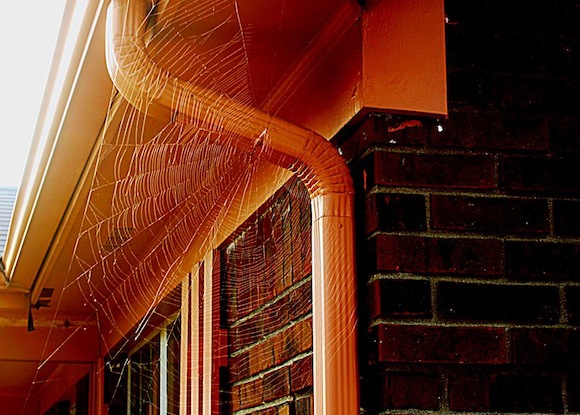
Spider webs are fascinating and can be among nature’s most beautiful creations. Here’s a really big web, captured in this photo by our friend Don Spain of Hillview, Kentucky. He had the following to say about this image:
Spiders are amazing engineers and artists. This web is very large, 3 feet by 4 feet, not counting the leader lines.
Here are some fun facts about spider webs.
- When a spider is still using the web to attract prey, it’s called a “spider web.” Meanwhile, an abandoned, often dusty web is called a “cobweb.”
- Spider webs have existed for at least 100 million years. The earliest one know, according to Wikipedia, was discovered in Early Cretaceous amber from Sussex, southern England.
- Spider webs are made from spider silk, which is produced from spinneret glands located at the tip of a spider’s abdomen. Each gland produces a different type of silk for a special purpose – for example, sticky silk for trapping prey or fine silk for wrapping it. Some spiders can produce up to 8 different silks during their lifetime.
- Spiders have been known to work together to build communal webs. In 2007, a communal spider web at Lake Tawakoni State Park in Texas was reported to be 200 yards (180 meters) across.
- Spiders can build their webs in space, as evidenced by a 1973 experiment aboard Skylab. Spider webs in space appear to be made of finer silk. And they are not uniformly thick as they are on the ground. But otherwise the spiders aboard Skylab seemed to do quite well spinning their webs in weightless conditions.
Thank you, Don Spain, for your photo and for giving us an excuse to think about spiders! They are fascinating creatures.
Like what you read?
Subscribe and receive daily news delivered to your inbox.
Thank you! Your submission has been received!
Oops! Something went wrong while submitting the form.
More from
David Callejas
View All
Ready, set, explore Earth from home
January 14, 2021
Sometimes Island on Lake Travis
August 13, 2020
Two planets destined to die as their star expands
June 2, 2014











